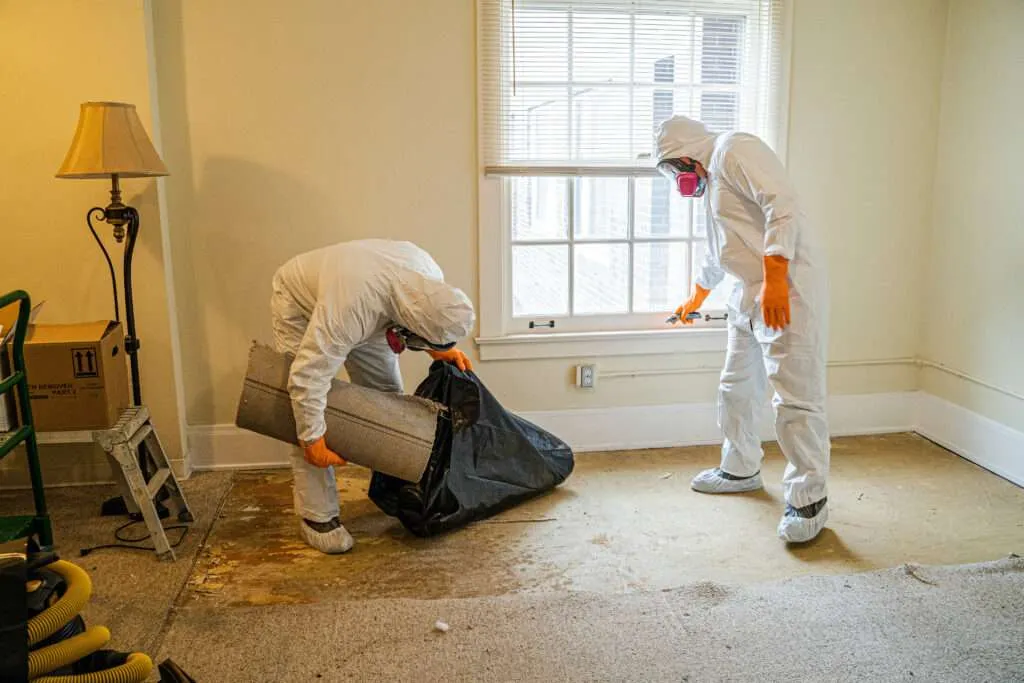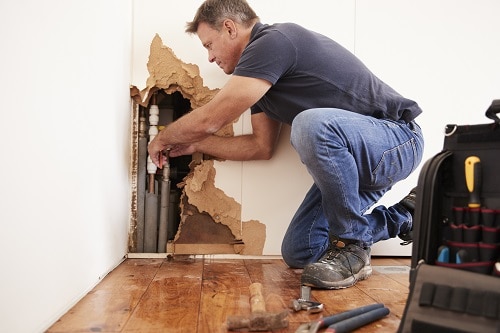What makes Water Damage Restoration important after a flood?
Wiki Article
Water Damage Restoration 101: Comprehending the Process and Price
Water damage can strike unexpectedly, leaving property owners in a state of complication. Recognizing the restoration process is essential for effective recuperation. From examining the damage to choosing the right company, each action affects the total result and expense. Factors such as the type of water damage and necessity also play a substantial duty. What are the details methods used in remediation, and how can one prepare for prospective expenses?Kinds Of Water Damage
Water damage can arise from different sources, each offering distinct difficulties for repair. The 3 key kinds of water damage are categorized based on contamination levels: tidy water, grey water, and black water. Tidy water originates from resources like busted pipes or rainwater, posturing minimal health risks. Gray water, which includes wastewater from sinks or cleaning equipments, has impurities that might create discomfort or ailment if consumed. Black water, the most unsafe group, comes from sewer or floodwaters, containing harmful microorganisms and pathogens. Each type requires specific restoration techniques and precaution to successfully mitigate and deal with the damage health and wellness dangers. Recognizing these distinctions is important for homeowners and specialists included in the water damage reconstruction procedure.Preliminary Assessment and Inspection
A comprehensive initial evaluation and evaluation are vital action in the water damage restoration procedure. This stage begins with a specialist reviewing the level of the damage, recognizing the resource of the water intrusion, and figuring out the kind of water entailed - Flood Cleanup Services. Service technicians make use of customized tools to determine dampness degrees in numerous products, such as wall surfaces, floors, and furniture. Additionally, they analyze structural honesty and possible carcinogen, including mold and mildew development. The searchings for from this evaluation inform the restoration strategy, assisting needed actions and source allotment. Exact documents of the damage is necessary for insurance coverage cases and future recommendation. On the whole, this initial assessment lays the groundwork for effective remediation, making sure an in-depth feedback to the certain circumstance at hand

Water Removal Methods
Complying with the first evaluation, effective water extraction methods are utilized to reduce damage and stop further problems. These techniques involve making use of specific equipment such as completely submersible pumps and industrial-grade vacuum cleaners. The selection of method relies on the quantity of water present and the kind of products impacted. For standing water, completely submersible pumps are normally used for quick removal, while vacuum cleaners are ideal for removing water from rugs and furniture. In addition, progressed techniques like water removal floor coverings might be utilized for hard-to-reach locations. The objective is to remove as much water as feasible, reducing the potential for mold development and architectural damage. Trigger and efficient water removal is vital in the general water damage repair procedure.Drying Out and Dehumidification Process
Once the water removal is total, the drying and dehumidification procedure comes to be critical to bring back the affected location. This stage generally utilizes industrial-grade dehumidifiers and air movers to properly minimize wetness degrees. The dehumidifiers draw in moist air, getting rid of excess humidity, while air movers distribute air to speed up evaporation. Surveillance devices is typically used to track moisture and temperature levels, ensuring excellent drying out conditions. The period of this process can differ depending upon the level of the water damage and environmental aspects. It is vital to completely dry all impacted materials, consisting of wall surfaces, floor covering, and home furnishings, to prevent mold and mildew development and architectural damage. Proper execution of this action is essential for an effective reconstruction outcome.Cleaning Up and Disinfecting Afflicted Areas

First Evaluation and Inspection
Before starting any type of restoration initiatives, a detailed first assessment and evaluation of the affected areas are vital for efficient cleansing and sterilizing. This procedure includes determining the extent of water damage, establishing the resource of the water invasion, and assessing the materials impacted. Inspectors usually seek indications of mold and mildew growth, structural stability issues, and damaged valuables. The assessment likewise includes examining moisture degrees utilizing customized devices to ensure no hidden water pockets continue to be, as these can result in more issues. Recording the findings is crucial for planning the next action in the remediation process. A detailed initial analysis enables restoration professionals to devise a targeted strategy for reliable cleansing and disinfecting, ultimately minimizing damage and health and wellness threats.Cleansing Techniques and Products
Effective cleansing and sterilizing of water-damaged locations require a variety of products and techniques tailored to the specific products impacted. For permeable surfaces like drywall and carpets, removal approaches are vital to eliminate excess moisture, adhered to by deep cleansing with specialized detergents. Non-porous products such as ceramic tile or metal can be cleaned up utilizing commercial-grade cleaners that successfully remove pollutants. Heavy steam cleaning is another effective strategy, particularly for carpets and upholstery, as it utilizes heats to eliminate germs and mold and mildew. Furthermore, environmentally friendly products are increasingly popular for their safety and efficacy. Inevitably, picking the appropriate cleansing methods and items not only ensures prompt sanitation yet likewise help in preventing additional damage and wellness hazards associated with water intrusion.Sanitization and Disinfection Techniques
Learn More When resolving water damage, proper sanitization and sanitation methods are vital to assure the safety and security and wellness of the damaged setting. After initial cleansing, surfaces need to be treated with proper anti-bacterials to remove virus, mold and mildew, and bacteria that prosper in moist problems. Common methods include making use of EPA-approved chemical disinfectants, which can be used with spraying or cleaning strategies. In addition, ultraviolet (UV) light systems can effectively sanitize areas by reducing the effects of microorganisms without rough chemicals. The option of approach typically relies on the kind of products influenced and the extent of contamination. Ultimately, complete sanitization not just recovers a safe home however likewise aids stop future health and wellness risks associated with remaining wetness and mold and mildew growth.
Repair Services and Restoration Options

Aspects Affecting Restoration Costs
The degree of water damage straight influences the restoration costs home owners can expect to incur. Factors such as the resource of the water, the period of exposure, and the afflicted products greatly affect prices. Clean water damage from a damaged pipe is typically less pricey to bring back compared to damage created by sewage (Water Damage Restoration). Additionally, the degree of contamination dictates the demand for specialized cleansing and disposal solutions, further enhancing expenditures. Geographic place likewise contributes, as local labor rates and schedule of remediation services can vary. Lastly, the necessity of the response influences prices; quicker treatments generally bring about reduce total expenses by avoiding more damage. Recognizing these factors is crucial for home owners when estimating reconstruction expensesThe 3 key types of water damage are classified based on contamination degrees: clean water, gray water, and black water. A thorough preliminary analysis and inspection are important actions in the water damage restoration process. For standing water, submersible pumps are commonly utilized for quick removal, while vacuum cleaners are perfect for removing water from rugs and furniture. The degree of water damage directly influences the restoration costs house owners can expect to incur. Clean water damage from a busted pipe is usually much less costly to recover compared to damage triggered by sewer.
Report this wiki page